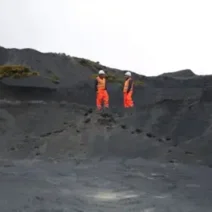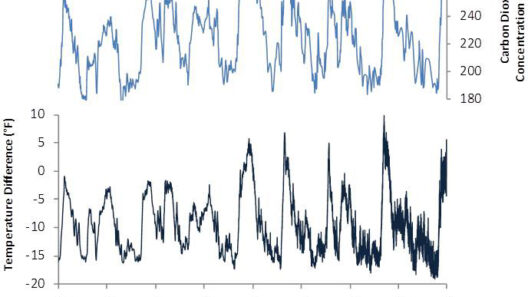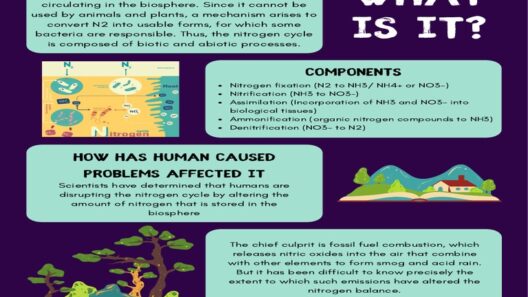As the sun casts its unwavering gaze upon our planet, a complex interplay of environmental factors promotes an insidious phenomenon: the proliferation of infectious diseases. While the correlation between global warming and the emergence of new pathogens may appear subtle to the untrained eye, the truth unfurls like the petals of a sinister flower, revealing the depth of the crisis we face. Global warming acts as a catalyst, an accelerant for the spread of disease, transforming our ecosystems into breeding grounds for various illnesses.
Climate change is not merely a specter of rising temperatures; it is the forging of a new reality where warmth reigns supreme, and in this altered environment, both flora and fauna adapt, and often, maladapt. As the earth warms, mosquitoes and ticks expand their ranges. Historically confined to temperate regions, these vectors are now inching into new territories, where they bring with them the viruses and bacteria that can wreak havoc on human health. The emergence of diseases such as Zika, dengue fever, and West Nile virus serves as a dire warning, an affront to humanity spawned from our excessive carbon footprint.
The melting ice caps and rising sea levels bring with them an additional set of diseases, often dubbed the “old foes.” Pathogens that were long trapped in permafrost re-emerge, awakened by thawing landscapes. This eerie resurrection extends beyond ancient viral foes; it also encapsulates the reality of emerging conditions like cholera. As coastal areas experience heightened rainfall and flooding, bacteria thrive in the tumultuous waters, leading to outbreaks. The destabilization of ecosystems creates a perfect storm, one that is wreaking havoc across myriad populations.
The ramifications of climate change ripple through our socio-economic structures as well. Vulnerable communities, often located in low-lying coastal regions, face the brunt of both climatic upheaval and disease. The lack of resources exacerbates their predicament, rendering them ill-equipped to combat outbreaks. These populations become unwitting participants in a sinister dance between climate change and health, sustaining the vicious cycle that continues to spiral out of control. The interplay of environmental degradation and social inequity breeds a volatile scenario where marginalized communities bear an unequal share of the burden.
Moreover, the air we breathe becomes a vector for our demise. Increased temperatures facilitate the proliferation of harmful pollutants, creating a harmonic convergence of respiratory diseases. Asthma and bronchitis thrive in these conditions, a tragic irony rendered by the very pollution that arises from industrial processes. The consequences of climate change are not confined merely to the physical realm but extend into mental health, creating a tapestry of distress that can overwhelm individuals and communities alike. The intertwining of respiratory illness and psychological strain paints a bleak picture of our collective future.
As we consider the mechanisms of disease spread in the context of global warming, we must not overlook the contribution of deforestation. The widespread removal of trees not only diminishes biodiversity but alters the delicate balance of ecosystems. Wildlife, driven from their natural habitats, comes into closer contact with human populations, becoming unwitting conduits for zoonotic diseases. The spillover of these pathogens into human populations illustrates the fragile threads that interlink organisms within our biosphere. Each interaction bears the potential for catastrophe, highlighting the urgent need to restore our ecosystems before they shatter irrevocably.
The complexity escalates as climate change influences agrarian practices and food security. Droughts and unpredictable rainfall patterns lead to crop failures, driving societies into a precarious state where malnutrition becomes rampant. The decline in nutritional health fortifies the ground for infectious diseases to thrive, as weakened immune systems fall prey to pathogens that once posed negligible threats. The cyclical relationship between food security and health outcomes remains a critical factor in understanding how climate perturbations engender public health crises.
Yet, there is hope amid despair. As scientists document these trends, advocacy for proactive measures has grown. Policymakers are urged to heed the warnings echoing from research institutes and health organizations. Mitigating climate change necessitates collaborative efforts at local, national, and global levels, prioritizing sustainable practices that decouple economic growth from environmental degradation. Transitioning towards renewable energy sources, enhancing public transportation, and promoting sustainable agricultural practices serve not only to combat climate change but also to alleviate the pressures of disease.
Education plays a pivotal role in reshaping our responses. Equipping individuals with knowledge fosters resilience against the rising tide of disease. Empowered communities can better prepare for outbreaks, adopt preventive measures, and engage in advocacy for systemic change. Awareness is the keystone in this multifaceted approach, galvanizing action towards a more sustainable future.
In conclusion, the march of diseases, propelled by the inexorable force of global warming, manifests a clarion call for humanity. The consequences of climate change extend far beyond the environment, infiltrating our health, economies, and the very essence of our communities. As the temperature continues to rise, so too does the urgency to address the underlying causes of this malaise. The time has come to act decisively to curtail the warming, heal our fractured ecosystems, and safeguard our health. The future hangs in the balance, and we, as stewards of this planet, are called to rise to the occasion, lest we become mere observers in a calamitous destiny. Taking charge of our collective fate is the only way forward, allowing us to stem the tide of this emerging crisis.








